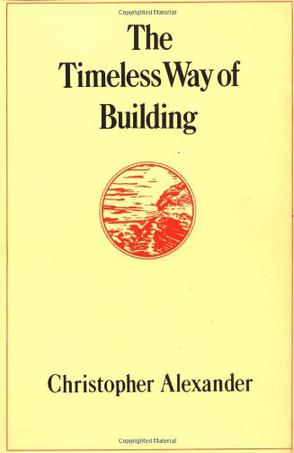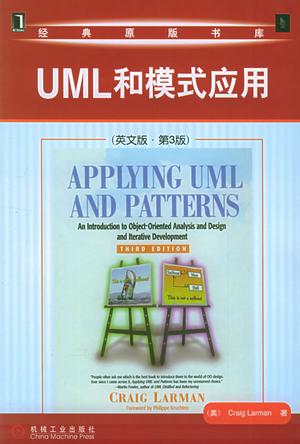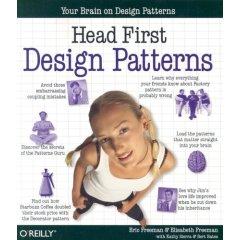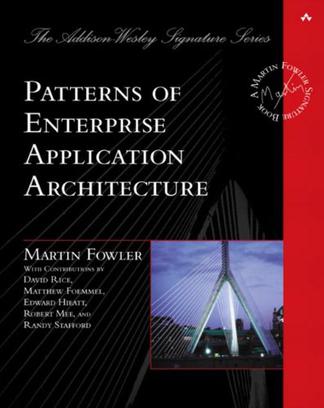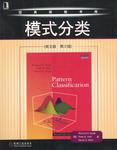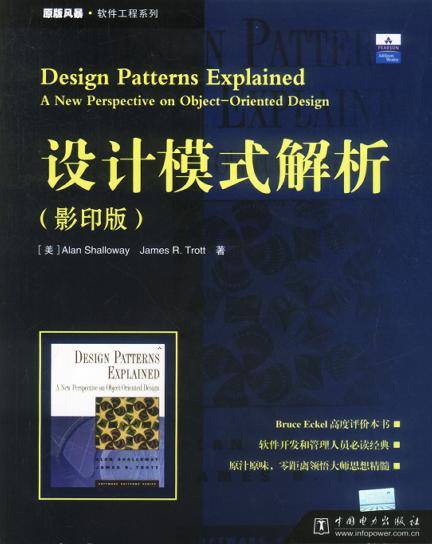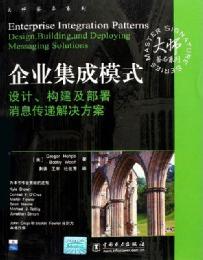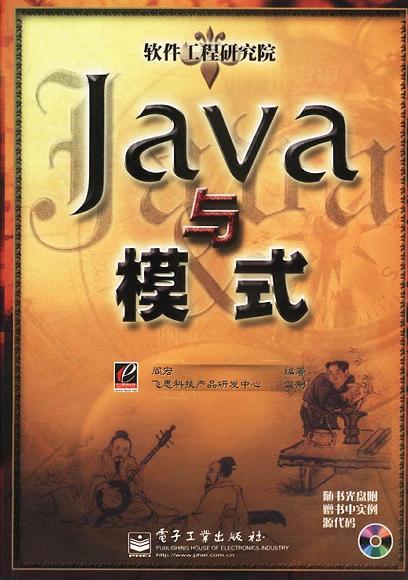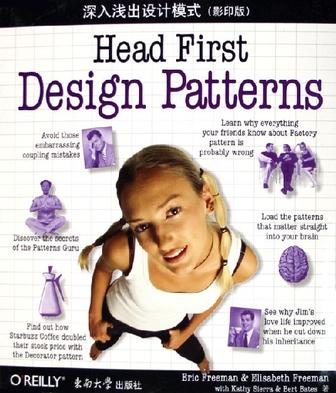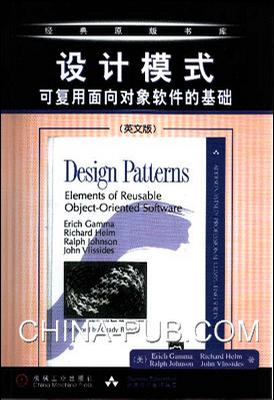欢迎来到相识电子书!
标签:pattern
-
The Timeless Way of Building
The theory of architecture implicit in our world today, Christopher Alexander believes, is bankrupt. More and more people are aware that something is deeply wrong. Yet the power of present-day ideas is so great that many feel uncomfortable, even afraid, to say openly that they dislike what is happening, because they are afraid to seem foolish, afraid perhaps that they will be laughed at. Now, at last, here is a coherent theory which describes in modern terms an architecture as ancient as human society itself. -
UML和模式应用(英文版·第3版)
《UML和模式应用》(英文版第3版)介绍了“对象思想”,并在实际的面向对象分析和设计中应用了这一思想,即如何以对象进行思考和设计,以及如何创建精致、健壮和可维护的系统。开发者和学生可以通过贯穿全书的两个案例研究的三个迭代来学习面向对象分析和设计(OOA/D),这两个案例研究增量地介绍了关键技能、OO的本质原则和模式、UML表示法和最佳实践。读者不仅可以从中学习到UML图,更重要的是可以学习到如何在OO软件开发环境下应用UML。享誉世界的崭新版本,面向对象分析与设计及UML的介绍。全面升级到UML 2和最新的迭代/敏捷实践。增加了全新的案例研究,阐述了大量关键思想。无论对于专业人士还是教师来说,《UML和模式应用》(英文版第3版)都堪称世界一流。书中介绍了“对象思想”,并在实际的面向对象分析和设计中应用了这一思想,即如何以对象进行思考和设计,以及如何创建精致、健壮和可维护的系统。开发者和学生可以通过贯穿全书的两个案例研究的三个迭代来学习面向对象分析和设计(OOA/D),这两个案例研究增量地介绍了关键技能、OO的本质原则和模式、UML表示法和最佳实践。读者不仅可以从中学习到UML图,更重要的是可以学习到如何在OO软件开发环境下应用UML。 基于广受赞誉的前两版,本版进行了修订,充分反映了新的UML 2标准,提倡了具有高度影响的、迭代的和有效的敏捷建模实践,有助于读者掌握对象设计,理解进化式需求和用例、领域对象建模、职责驱动设计、OO设计本质、分层架构、“四人帮”设计模式、GRASP、迭代方法、UP的敏捷途径等。 -
Head First Design Patterns
You're not alone. At any given moment, somewhere in the world someone struggles with the same software design problems you have. You know you don't want to reinvent the wheel (or worse, a flat tire), so you look to Design Patterns--the lessons learned by those who've faced the same problems. With Design Patterns, you get to take advantage of the best practices and experience of others, so that you can spend your time on... something else. Something more challenging. Something more complex. Something more fun. You want to learn about the patterns that matter--why to use them, when to use them, how to use them (and when NOT to use them). But you don't just want to see how patterns look in a book, you want to know how they look "in the wild". In their native environment. In other words, in real world applications. You also want to learn how patterns are used in the Java API, and how to exploit Java's built-in pattern support in your own code. You want to learn the real OO design principles and why everything your boss told you about inheritance might be wrong (and what to do instead). You want to learn how those principles will help the next time you're up a creek without a design paddle pattern. Most importantly, you want to learn the "secret language" of Design Patterns so that you can hold your own with your co-worker (and impress cocktail party guests) when he casually mentions his stunningly clever use of Command, Facade, Proxy, and Factory in between sips of a martini. You'll easily counter with your deep understanding of why Singleton isn't as simple as it sounds, how the Factory is so often misunderstood, or on the real relationship between Decorator, Facade and Adapter. With Head First Design Patterns, you'll avoid the embarrassment of thinking Decorator is something from the "Trading Spaces" show. Best of all, in a way that won't put you to sleep! We think your time is too important (and too short) to spend it struggling with academic texts. If you've read a Head First book, you know what to expect - a visually-rich format designed for the way your brain works. Using the latest research in neurobiology, cognitive science, and learning theory, Head First Design Patterns will load patterns into your brain in a way that sticks. In a way that lets you put them to work immediately. In a way that makes you better at solving software design problems, and better at speaking the language of patterns with others on your team. -
Patterns of Enterprise Application Architecture
The practice of enterprise application development has benefited from the emergence of many new enabling technologies. Multi-tiered object-oriented platforms, such as Java and .NET, have become commonplace. These new tools and technologies are capable of building powerful applications, but they are not easily implemented. Common failures in enterprise applications often occur because their developers do not understand the architectural lessons that experienced object developers have learned. Patterns of Enterprise Application Architecture is written in direct response to the stiff challenges that face enterprise application developers. The author, noted object-oriented designer Martin Fowler, noticed that despite changes in technology--from Smalltalk to CORBA to Java to .NET--the same basic design ideas can be adapted and applied to solve common problems. With the help of an expert group of contributors, Martin distills over forty recurring solutions into patterns. The result is an indispensable handbook of solutions that are applicable to any enterprise application platform. This book is actually two books in one. The first section is a short tutorial on developing enterprise applications, which you can read from start to finish to understand the scope of the book's lessons. The next section, the bulk of the book, is a detailed reference to the patterns themselves. Each pattern provides usage and implementation information, as well as detailed code examples in Java or C#. The entire book is also richly illustrated with UML diagrams to further explain the concepts. Armed with this book, you will have the knowledge necessary to make important architectural decisions about building an enterprise application and the proven patterns for use when building them. The topics covered include * Dividing an enterprise application into layers * The major approaches to organizing business logic * An in-depth treatment of mapping between objects and relational databases * Using Model-View-Controller to organize a Web presentation * Handling concurrency for data that spans multiple transactions * Designing distributed object interfaces -
模式分类
《模式分类》(英文版)(第2版)简明易读,新增的图表使得许多统计和数学题材非常生动。最终以完美和谐的形式,引导读者深入新的主题。 -
设计模式解析
本书提供了从分析到实现的全过程,从而使你能够了解模式的内幕,并且为你提高自身的整体设计能力奠定基础。本书还为初学者提供了关于面向对象设计模式的准确和有帮助的入门介绍。 本书将面向对象的编程原则与设计模式的强大功能结合起来创建了一个编程环境,用于开发健壮的和可靠的软件。书中包含很多实际的和可应用的实例,用来教你如何使用模式的优势来进行高级软件设计。 -
企业集成模式
这是一本有关使用消息传递进行企业集成的书。这本书并不只是介绍某种特别的技术或产品,而是为使用各种消息传递产品和技术的开发人员以及集成人员准备的。本书不会为企业应用集成建立商业案例,而是把重点放在如何实现应用的集成上。读者通过本书可以学会如何集成企业应用。. 异步消息传递已证明是成功实现企业集成的最佳方案。但是,为了构建和部署消息传递解决方案,开发人员要面对大量的问题。本书提供了意义非凡的65种模式,并用真实的解决方案演示了消息传递的强大功能,可以帮助你为自己的企业设计出高效的消息传递解决方案。.. 本书还是一本有关各种消息传递或中间件技术的指南。在书中你可以找到采用不同技术(如JMS、MSMQ、TIBCO、BizTalk和XSL)的例子,这些例子能为读者演示如何把模式转换成真正的实现。 -
Java与模式
《Java与模式》是一本讲解设计原则以及最为常见的设计模式的实用教材,目的是为了工作繁忙的Java系统设计师提供一个快速而准确的设计原则和设计模式的辅导。全书分为55章,第一个章节讲解一个编编程模式,说明此模式的用意、结构,以及这一模式适合于什么样的情况等。每一个章节都附有多个例子和练习题,研习这些例子、完成这些练习题可以帮助读者更好地理解所讲的内容。大多数的章节都是相对独立的,读者可以从任何一章开始读起。为了满足不同程序的读者的需要,书中提供了一些标为“专题”的章节,不阅读这些章节,对阅读书中的标准章节没有影响。 -
深入浅出设计模式(影印版)
《深入浅出设计模式》(影印版)的编写运用许多最新的研究,包括神经生物学、认知科学以及学习理论,这使得《深入浅出设计模式》(影印版)能够将这些设计模式深深地烙印在你的脑海中,不容易被遗忘。你将会更擅长于解决软件设计中的问题,并能够和你的团队成员用模式的语言来更好地沟通。 -
大话设计模式
本书通篇都是以情景对话的形式,用多个小故事或编程示例来组织讲解GOF(设计模式的经典名著——Design Patterns:Elements of Reusable Object-Oriented Software,中译本名为《设计模式——可复用面向对象软件的基础》的四位作者EIich Gamma、Richard Helm、Ralph Johnson,以及John Vlissides,这四人常被称为Gang of Four,即四人组,简称GoF)总结的23个设计模式。本书共分为29章。其中,第1、3、4、5章着重讲解了面向对象的意义、好处以及几个重要的设计原则;第2章,以及第6到第28章详细讲解了23个设计模式;第29章是对设计模式的全面总结,附录部分是通过一个例子的演变为初学者介绍了面向对象的基本概念。本书的特色是通过小菜与大鸟的趣味问答,在讲解程序的不断重构和演变过程中,把设计模式的学习门槛降低,让初学者可以更加容易地理解——为什么这样设计才是好的?是怎样想到这样设计的?以达到不但授之以“鱼”,还授之以“渔”的目的。引导读者体会设计演变过程中蕴藏的了、智慧。 本书适合编程初学者或希望在面向对象编程上有所提高的开发人员阅读。
热门标签
下载排行榜
- 1 梦的解析:最佳译本
- 2 李鸿章全传
- 3 淡定的智慧
- 4 心理操控术
- 5 哈佛口才课
- 6 俗世奇人
- 7 日瓦戈医生
- 8 笑死你的逻辑学
- 9 历史老师没教过的历史
- 10 1分钟和陌生人成为朋友

